Everyone who is going to be setting their alarms to be the first to pre-order one of the new iPhones in 2022 has an important choice to make: getting the lower-end iPhone 14 or iPhone 14 Plus, or getting the higher-end iPhone 14 Pro or iPhone 14 Pro Max.
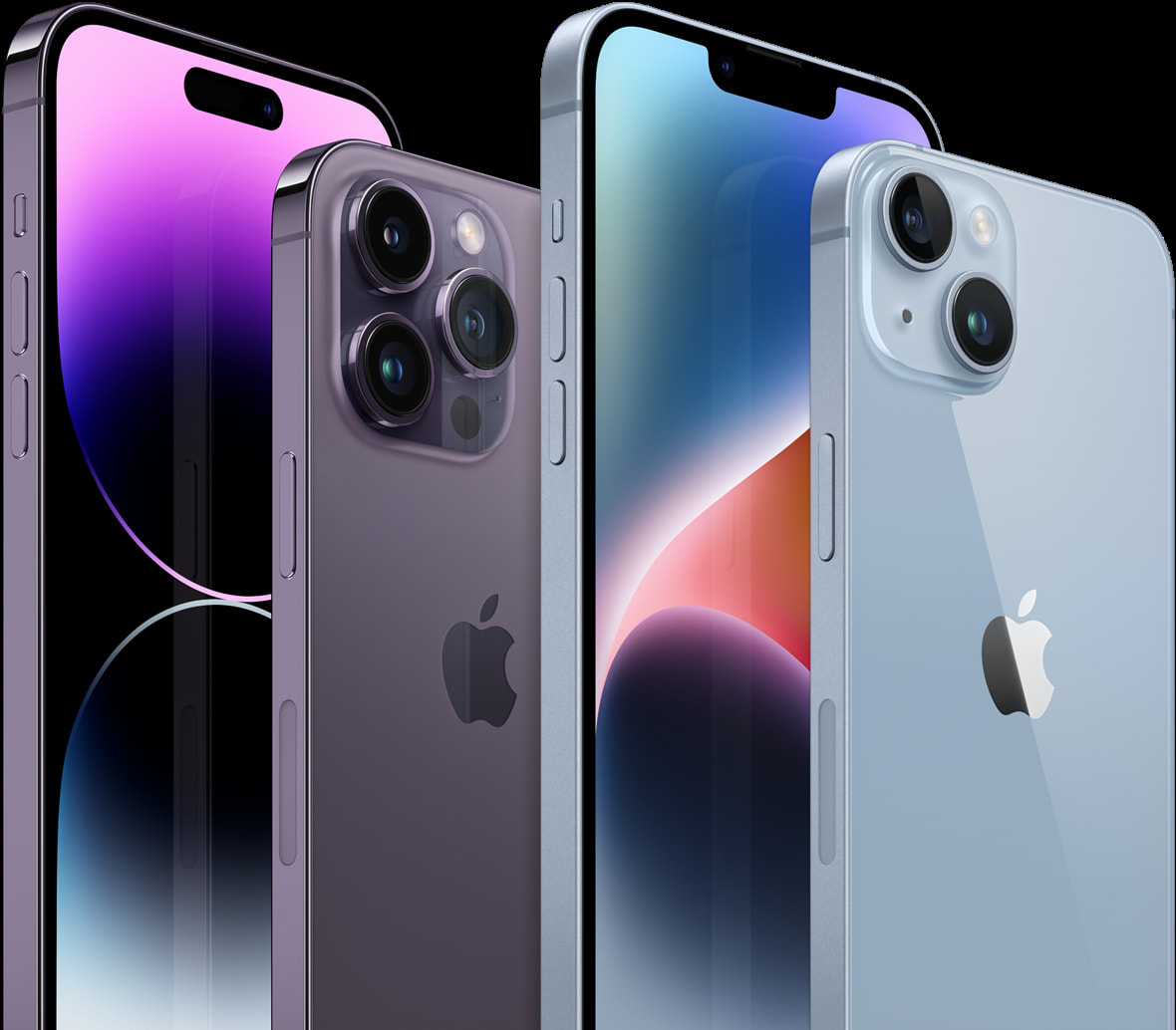
Obviously, the former are tailored for anyone who just wants a capable smartphone, while the latter are tailored for those who demand the best of the best. But what technical differences set these handsets apart from one another? We’re glad you asked because we’re going to walk you through it all in this piece.
iPhone 14/14 Plus vs iPhone 14 Pro/14 Pro Max
Colors & materials
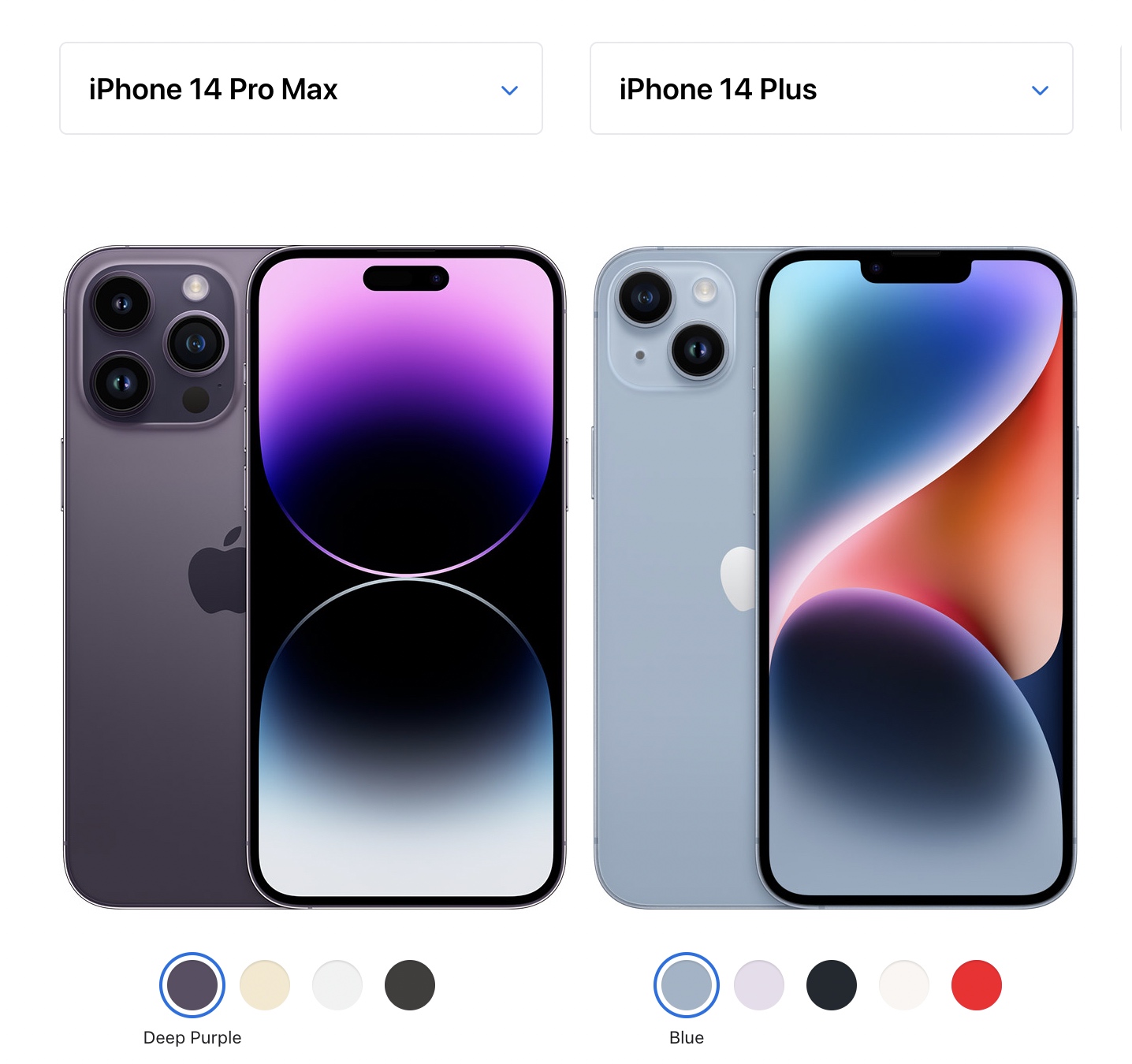
Colors are going to differ between the basic iPhone 14 & 14 Plus versus the more prestigious iPhone 14 Pro & 14 Pro Max. The cheaper iPhone 14 & 14 Plus come in Blue, Purple, Midnight, Starlight, and (PRODUCT) RED, while the pricier iPhone 14 Pro & 14 Pro Max come in Deep Purple, Silver, Gold, and Space Black.
The materials are a little different too. While all models come with the Ceramic Shield front, deemed the toughest glass ever in a smartphone, the iPhone 14 & 14 Plus are made from aerospace grade aluminum while the iPhone 14 Pro & 14 Pro Max are made from surgical grade stainless steel.
Processing power
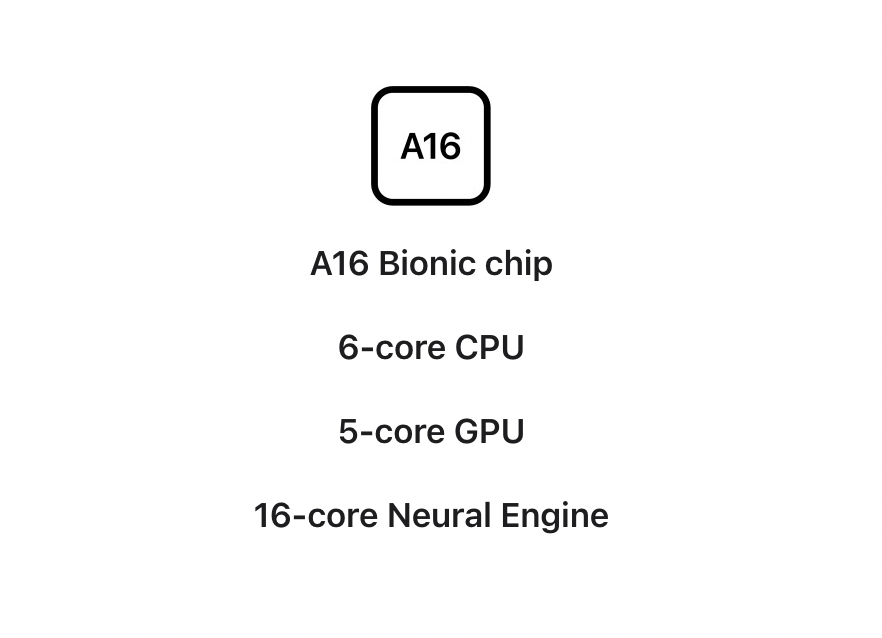 Apple spared no expense to make sure that the latest ‘pro’ handsets would get the latest processing technology, and so it comes as no surprise that we’re seeing the new A16 Bionic chip in the iPhone 14 Pro & 14 Pro Max. On the other hand, the iPhone 14 & 14 Plus sport the A15 Bionic chip, which is same chip that comes in the iPhone 13 Pro & 13 Pro Max.
Apple spared no expense to make sure that the latest ‘pro’ handsets would get the latest processing technology, and so it comes as no surprise that we’re seeing the new A16 Bionic chip in the iPhone 14 Pro & 14 Pro Max. On the other hand, the iPhone 14 & 14 Plus sport the A15 Bionic chip, which is same chip that comes in the iPhone 13 Pro & 13 Pro Max.
As far as performance goes, the differences are reportedly only marginal, but the A16 Bionic chip has a higher efficiency that supports some of the unique new features of the iPhone 14 Pro & 14 Pro Max that we’ll discuss later.
Display technology
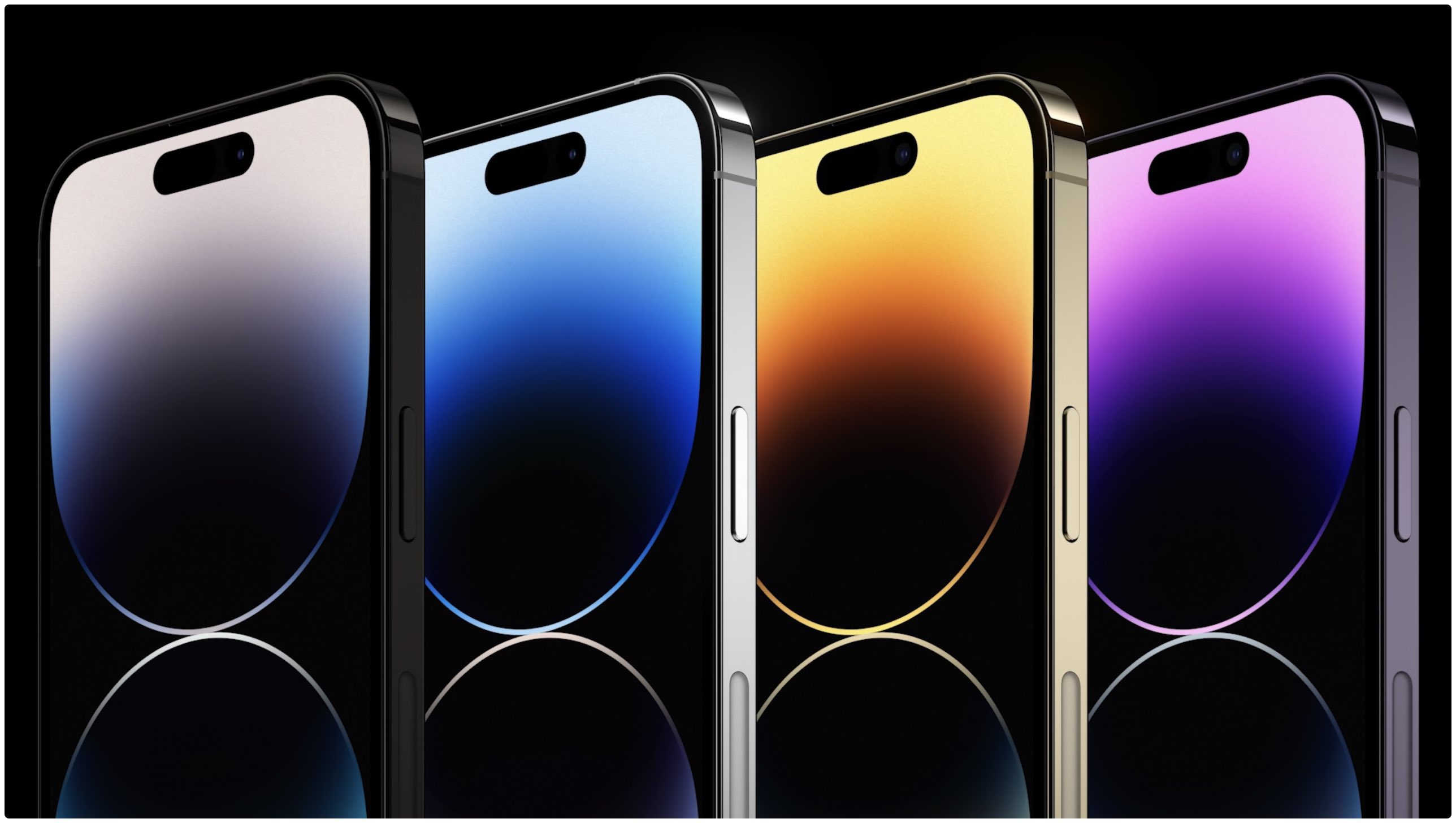
Comparing the displays on the two 2020 iPhone lineups is where we start to see some significant differences. While both the iPhone 14 & 14 Plus and the iPhone 14 Pro & 14 Pro Max come equipped with either a 6.1-inch or 6.7-inch display deemed good enough by Apple to be called the Super Retina XDR display, it goes without saying that the display in the ‘pro’ models goes a step beyond just having a few additional pixels.
Firstly, only the ‘pro’ models support ProMotion technology, which provides up to 120 frames per second of liquid-smooth refresh rate when required to provide the smoothest animations possible. Also unique to the ‘pro’ models is the Always-On Display capability, which reduces the display’s refresh rate to just 1 hertz to reduce power consumption when iOS 16’s beautiful Lock Screen aesthetics shine on.
You’re also going to find that the iPhone 14 & 14 Plus have the infamous ‘notch’ that we’ve had since the dawn of the iPhone X in 2018, while the iPhone 14 Pro & 14 Pro Max come with a new holepunch design that Apple calls the Dynamic Island. This so-called Dynamic Island intelligently uses the OLED display’s on/off pixel capabilities to create a seamless UI with pop-ups and shortcuts tailored to whichever app you might be using.
The ‘pro’ handset displays are also capable of substantially higher display brightness levels than the standard iPhone 14 & 14 Plus lineup. While the latter can achieve 800 nits brightness under most conditions and up to 1,000 nits brightness with HDR, the ‘pro’ displays can nearly double that with 1,000 nits brightness under most conditions, 1,600 nits brightness with HDR, and up to 2,000 nits brightness while outdoors in direct sunlight.
Photography & video recording
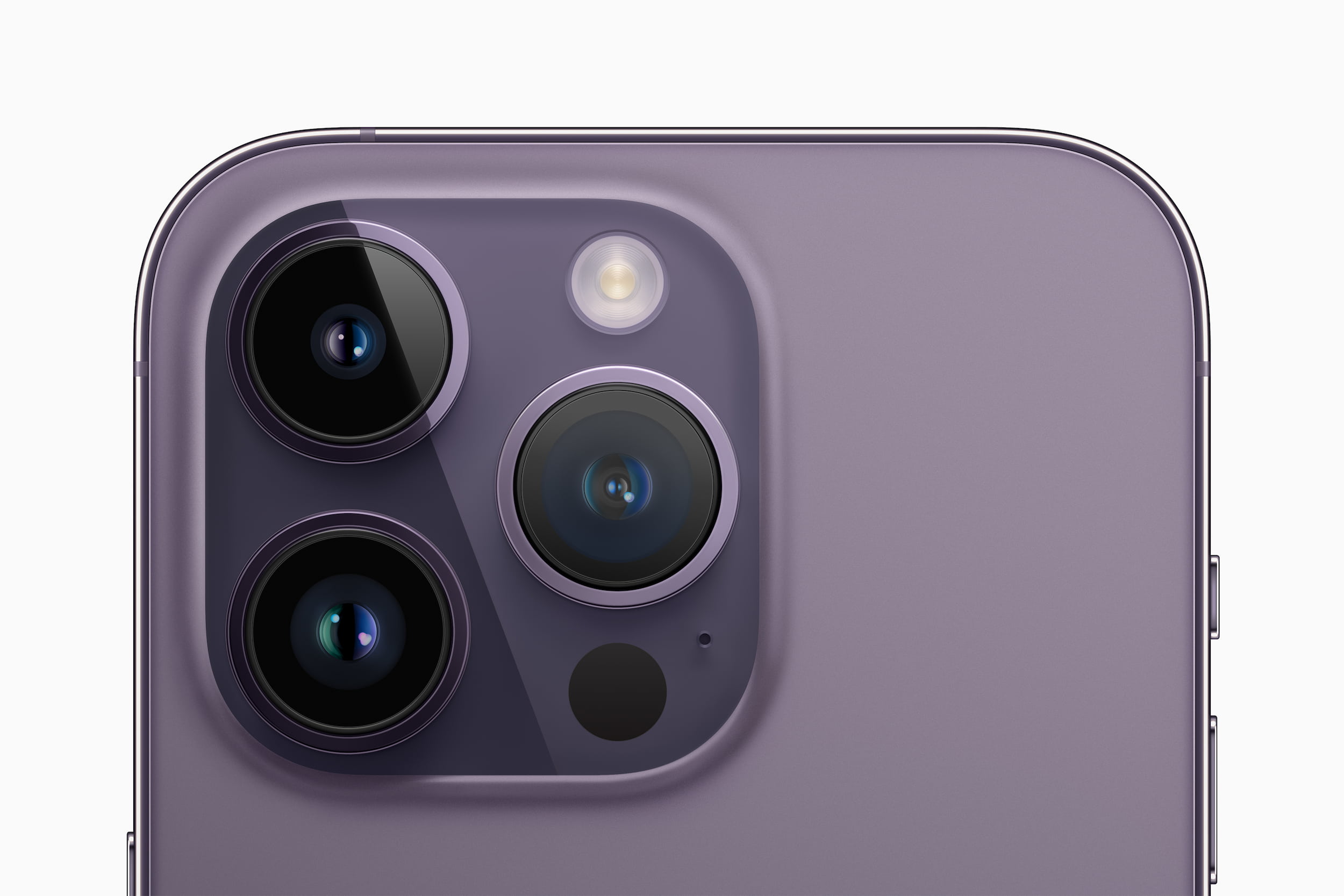
There are some rather substantial differences in the camera systems between the standard iPhone 14 & 4 Plus models and the top-tier iPhone 14 Pro & 14 Pro Max models. Right off the bat, the iPhone 14 & 14 Plus sport a dual 12-megapixel camera system with a standard camera and an ultra-wide camera, while the iPhone 14 Pro & 14 Pro Max sport a triple-Pro camera system with a 48-megapixel main camera, a 12-megapixel ultra-wide camera, and a 12-megapixel telephoto camera. Additional spec differences can be found below:
iPhone 14 & 14 Plus:
- Main: ƒ/1.5 aperture
- Ultra Wide: ƒ/2.4 aperture
iPhone 14 Pro & 14 Pro Max:
- Main: ƒ/1.78 aperture
- Ultra Wide: ƒ/2.2 aperture
- Telephoto: ƒ/2.8 aperture
Specs aside, the ‘pro’ models also have additional photography-boosting capabilities that you won’t find in the iPhone 14 & 14 Plus. One of such includes a second-generation sensor-shift optical image stabilization for reduced camera shake during shots, another which encompasses a boost in both digital & optical camera zoom capabilities, and of course there’s also the new adaptive True Tone flash system on the ‘pro’ models, which provides a more effective lighting for your camera based on the surrounding lighting conditions.
You can also do more from the Camera app on the ‘pro’ handsets that you can’t do on the iPhone 14 & 14 Plus models, such as taking Portraits in Night Mode, taking close-up macro photographs, and utilizing Apple ProRAW for inhaling as much detail into your photograph as you can for editing on the computer later. Those same macro capabilities are available while shooting video.
Storage capacity
All models of the iPhone 14 lineup are available with 128GB, 256GB, 512GB storage configurations, but only the ‘pro’ models are available in a 1TB storage configuration.
Battery life
The iPhone 14 & 14 Plus can achieve up to 26 hours of video playback, 20 hours of streamed video playback, and 100 hours of audio playback, but as you’d come to expect from a handset with a more efficient chip, the iPhone 14 Pro & 14 Pro Max are capable of up to 29 hours of video playback, 25 hours of streamed video playback, and 95 hours of audio playback. This equates to more battery life in the ‘pro’ models overall.
Other miscellaneous differences
The iPhone 14 Pro & 14 Pro Max also have the following features that the iPhone 14 & 14 Plus do not:
- Support for ProRes video recording (front and back cameras)
- Support for precision dual-frequency L1 & L5 GPS
- A LiDAR scanner that improves the accuracy of augmented reality
- The ‘pro’ models are slightly heavier due to being made of stainless steel instead of aluminum
Conclusion
While the iPhone 14 & 14 Plus are certainly no slouch in the smartphone market, it’s worth noting that the iPhone 14 Pro & 14 Pro Max are still superior handsets. Still, there’s savings to be had if the additional value isn’t worth it to you, as the iPhone 14 begins at $799, while the iPhone 14 Pro begins at $999.
Also see: iPhone 14 Pro vs iPhone 13 Pro
Do you plan to pre-order an iPhone 14, 14 Plus, 14 Pro, or 14 Pro Max? Let us know why you chose what you did in the comments section down below.